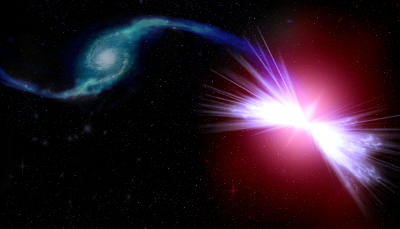Using AI to control energy for indoor agriculture
30 September 2024
Published online 26 May 2016
Supermassive black hole winds keep galaxies turned off, scientists theorize.

© Kavli IPMU
Enlarge image
An international team, including collaborators from the United Arab Emirates, identified the common phenomenon in a new paper published in Nature1. “Until our discovery, evidence for this theory has been very sparse,” says lead author Edmond Cheung, from the Kavli Institute for the Physics and Mathematics of the Universe (Kavli IPMU).
Galaxies begin their existence as lively and colourful spiral galaxies, full of gas and dust, and actively forming bright new stars. But as they evolve they quench their star formation for unknown reasons.
According to these scientists, a phenomenon dubbed “red geyser” is the culprit.
Red geysers are galaxies populated by old red stars, and powered by low-energy supermassive black holes. The black holes drive intense interstellar winds that contain enough mechanical energy to constantly heat up ambient gas and prevent it from cooling into young, blue stars.
“The most significant finding is how common these red geysers are,” says Cheung. The scientist says that red geysers make up about 10% of the medium mass, quiescent galaxy population.
“We have speculated that all quiescent galaxies must go through a 'red geyser' phase; an episodic phenomenon, which could have significant implications on our picture of galaxy evolution,” he adds.
How the jets of wind from the black holes form inside a galactic nucleus remains an uncertain matter, but the team suspects it may be due to all the material amassed by black holes.
“There is a lot of energy and radiation that is associated with this process. Somehow, part of this energy and radiation is ejected out into the host galaxy; and we believe [this] is responsible for these winds that we have observed,” explains Cheung.
The discovery was made by observing a prototypical near-dormant distant galaxy called Akira, using a survey programme called SDSS-IV MaNGA that allows scientists to observe galaxies in three dimensions — mapping both their appearance and how stars and gas move inside them.
“Our next step is to examine the entire red geyser population and investigate how they fit in with the galaxy population,” says Cheung.
doi:10.1038/nmiddleeast.2016.81
Cheung, E. et al. Supressing star formation in quiescent galaxies with supermassive black hole winds. Nature http://dx.doi.org/10.1038/nature18006 (2016).
Stay connected: